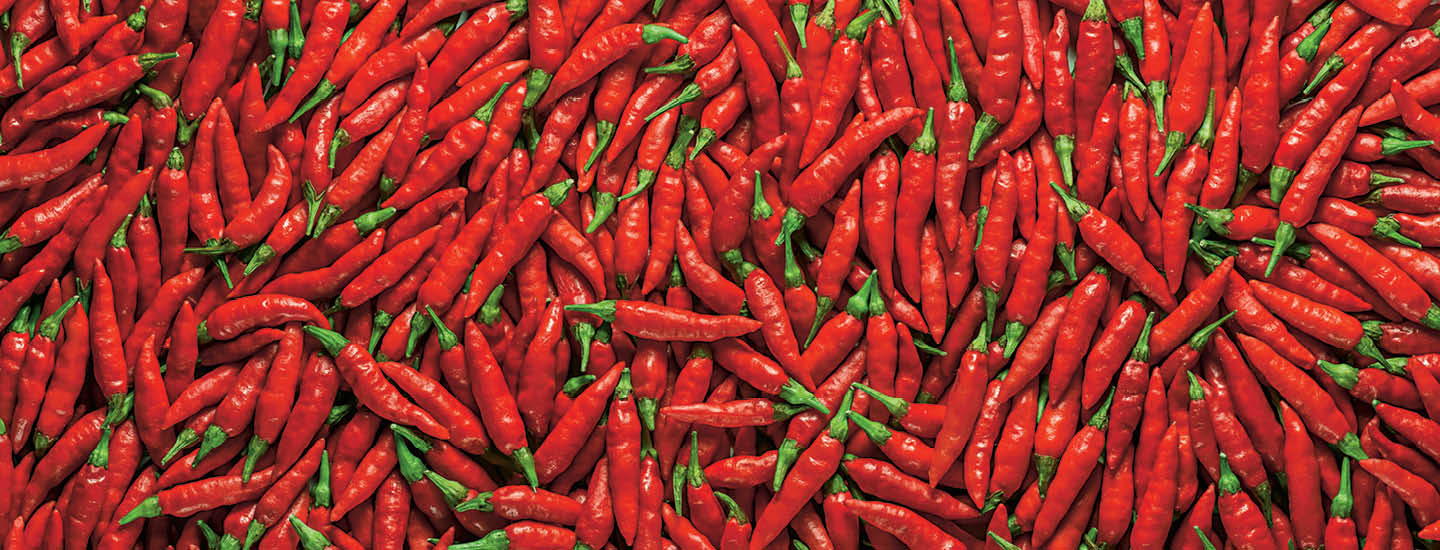A- Pepper x
2,693,000 SHU
B- Ghost pepper
855,000-1,041,427
SHU
C- Habanero
100,000-
350,000 SHU
D- Cayenne
pepper
30,000-50,000 SHU
E- Jalapeño
pepper
2,500-8,000 SHU
F- Bell pepper
0 SHU

CCSS
R.1, R.2, R.7, W.1
The Story of Spicy Food
Shutterstock.com
What can happen when you eat it?
A- Your eyes water.
B- Your nose gets runny.
C- You start to sweat.
The Heat Scale
Chili peppers get their heat from a chemical called capsaicin [kap-SAY-uh-suhn]. The Scoville scale measures how much capsaicin a pepper has. This is measured in Scoville Heat Units (SHU).
Courtesy of First We Feast (Pepper X); ryasick/Getty Images (Jalapeno); Shutterstock.com (All Other Images)
A- Pepper x
2,693,000 SHU
B- Ghost pepper
855,000-1,041,427
SHU
C- Habanero
100,000-
350,000 SHU
D- Cayenne
pepper
30,000-50,000 SHU
E- Jalapeño
pepper
2,500-8,000 SHU
F- Bell pepper
0 SHU
Note: Chart shows peppers’ relative positions. Not to scale.
Source: Guinness World Records (Pepper X); National Institute of Standards and Technology (all others)
The Health Effects
Some studies show that eating spicy food may help you live longer.
Too much capsaicin at once can affect your breathing or cause stomach problems.
Shutterstock.com
Did You Know . . .
Birds don’t react to capsaicin like humans do. They can eat the hottest pepper and feel no pain!
Your Turn: Imagine you have the chance to take part in a hot pepper eating contest. Write a paragraph stating whether you would do it and explaining your decision.